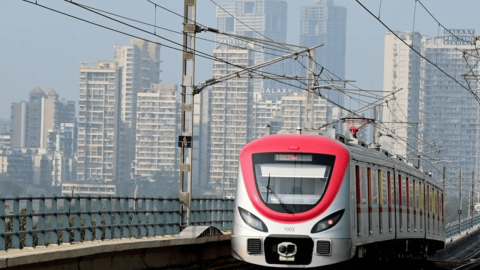Mira Road Connectivity Improves with Metro Station on Line 9 Phase 1 of Red Line Extension
By the end of this year, Mira Road—a bustling suburb north of Mumbai—is poised to witness a historic leap in urban transportation. As Phase 1 of Metro Line 9 nears completion, the region is set to become the first suburban node to be seamlessly linked by the Mumbai Metro Red Line extension. On May 10, overhead traction wires along a nearly 5 km corridor will be energized, marking the start of dynamic train trials. Combined with a significant upgrade to the existing Mira Road Western Railway station, this development signals a new era of integrated, high-capacity mobility in one of India’s fastest-growing commuter zones.
Red Line 9: Bridging the Suburban Transport Divide
Metro Line 9 is a vital extension of Mumbai Metro’s Red Line 7, running from Andheri East to Mira Bhayander. In Phase 1, this new stretch will connect Andheri (Western Express Highway) directly to Kashigaon via Dahisar, Pandurang Wadi, and Miragaon. This strategic alignment will dramatically cut down travel time between Mumbai’s western suburbs and the congested Mira-Bhayander belt.
The second phase will further extend the corridor to Subhash Chandra Bose Stadium in Bhayandar West. Once fully operational, the Red Line 9 will house eight stations, but only the first four will open initially.
Metro Trials Begin May 10: A Critical Safety Milestone
The Mumbai Metropolitan Region Development Authority (MMRDA) will energize the 25,000-volt overhead traction system on May 10, covering a 4.973 km stretch between Dahisar and Kashigaon. This energisation process is not merely symbolic—it initiates the most crucial phase before public launch: dynamic testing. These trials will include verification of train movement, communication systems, signaling integration, and safety mechanisms. It’s the final stretch before full commissioning.
Citizens have been advised to stay cautious around Metro Line 9 zones due to the live overhead power lines. The energized segment will mark the operational readiness of the Phase 1 infrastructure.
Mira Road WR Station: Undergoing a Vertical Metamorphosis
With a daily footfall surpassing 1.31 lakh passengers, Mira Road is among the busiest stations on the Western Railway network. Horizontal expansion is no longer feasible due to spatial constraints, prompting a vertical design overhaul under the Mumbai Urban Transport Project (MUTP-3A).
A 158.5-meter-long, 10.7-meter-wide elevated deck is under construction, accompanied by the addition of new north and middle foot overbridges (FOBs). This innovative deck-level grid is aimed at streamlining commuter movement through vertical zoning.
Redefining Urban Mobility Through Smart Design
The infrastructure revamp is focused on long-term passenger comfort and operational efficiency. According to Mumbai Railway Vikas Corporation (MRVC), interconnecting elevated deck zones with FOBs, escalators, and elevators will ease congestion and optimize platform access. This upgrade will not only enhance the existing rail experience but also offer seamless integration with the new Metro line.
By combining multimodal infrastructure, the project reflects a modern approach to public transport—solving urban density issues through intelligent, vertical design.
Kashigaon Station: A Gateway to Future Growth
Kashigaon Metro Station is strategically located 1.4 km east of the current Mira Road WR station. Its positioning ensures that residents and businesses in the area can benefit from smoother connectivity, making it an important transit hub in the northern suburbs. As a part of the Phase 1 rollout, Kashigaon will function as the terminal point before the network extends further to Bhayandar.
Given the swelling population in Mira-Bhayander and its growing importance in Mumbai’s suburban fabric, the timely delivery of this Metro link is a watershed moment.
What It Means for Daily Commuters and Urban Planners
Once operational, Metro Line 9 will significantly decongest road traffic, reduce travel times, and elevate daily commuting standards. By linking residential zones directly with Mumbai’s metro backbone, the corridor is expected to absorb a large share of the region’s road-based traffic.
Urban planners regard this initiative as a model for solving mobility challenges in rapidly densifying city fringes—combining legacy railway systems with metro-grade infrastructure for seamless transfers.
